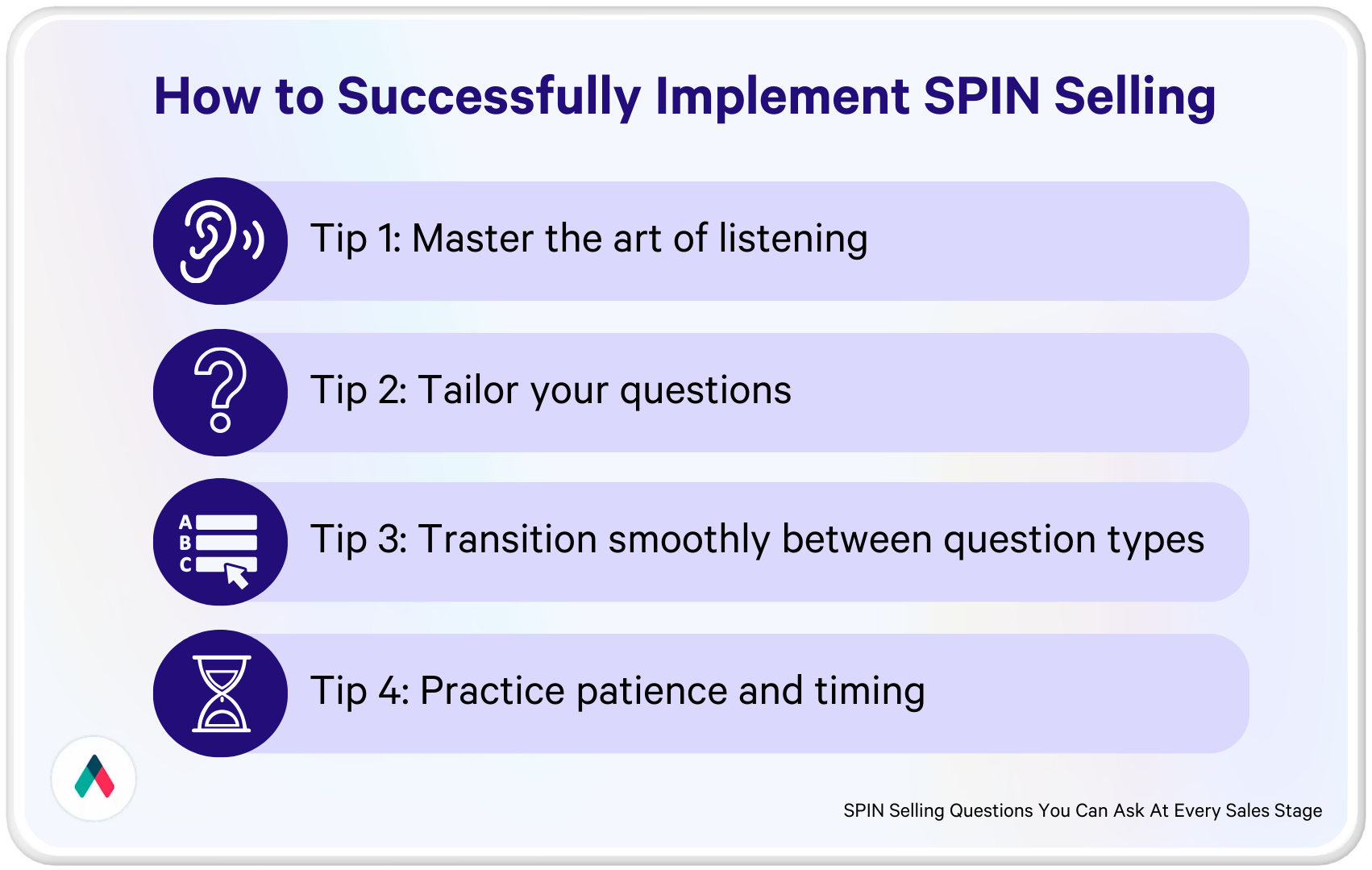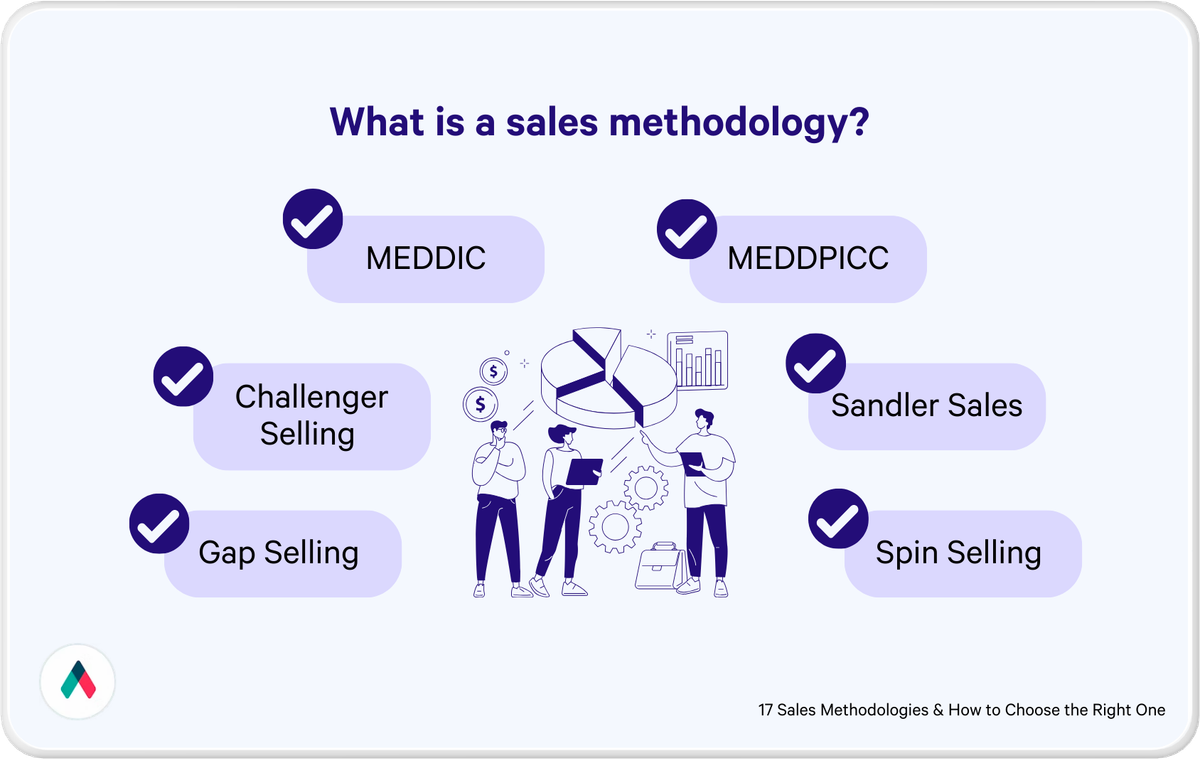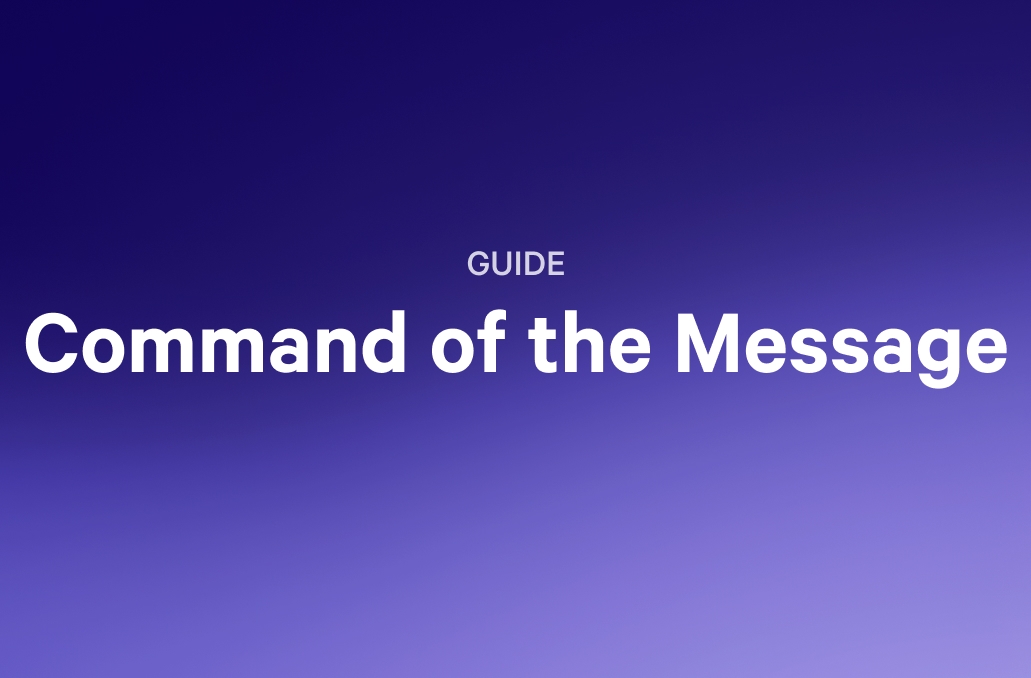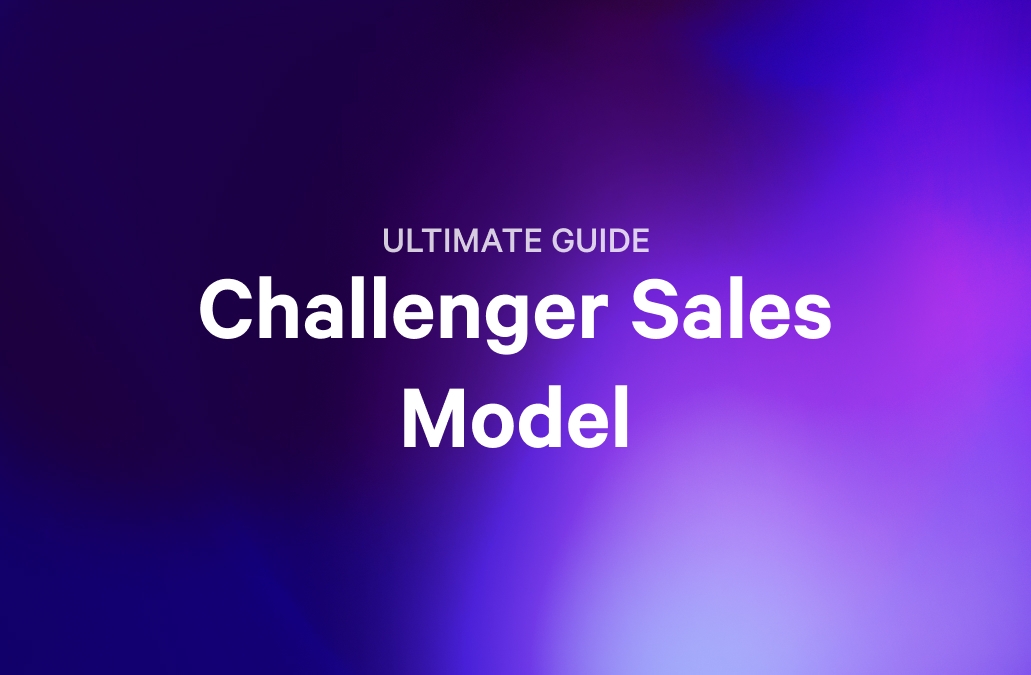“If you can’t solve a problem for a customer then there’s no basis for a sale. But if you uncover problems you can solve, then you’re potentially providing the customer with something useful”.
Neil Rackham’s seminal 1988 book on the SPIN selling sales methodology has more than just stood the test of time; it has become foundational to our understanding of what makes an effective sales conversation.
But while you may have heard of the framework, you may not be as well acquainted with how to apply it in the context of modern selling. This article aims to bridge that gap.
We explore in detail what lies at the core of SPIN selling, outlining strategic questions for each stage along the way. By the end, you'll have a toolkit of queries designed to engage and then convert.
Ready to spin your sales conversations towards success?
Key Takeaways
- Understanding the method: SPIN Selling revolves around four types of questions—Situation, Problem, Implication, and Need-payoff. Mastering these can dramatically improve your sales interactions.
- Tailored questions: Each stage of the sales conversation has its unique set of questions. These are crafted to progressively deepen the customer's engagement and move them closer to a sale.
- Practical application: The beauty of SPIN Selling lies in its practicality. The questions are designed to be adaptable and can be tailored to fit various sales scenarios (even different methodologies), making it a versatile tool to have in your sales team's arsenal.
What is SPIN selling?
Developed by Neil Rackham in the 1980s, SPIN Selling is a research-based sales method that focuses on asking the right questions at the right time to effectively uncover the client's core needs and challenges.
87% of buyers expect sales reps to act as trusted advisors, especially in more complex sales, and this was a transition Rackham saw on the horizon, offering practical guidance to address it.
SPIN stands for the four types of questions effective salespeople ask:
- Situation: Questions that help you understand the context in which your client operates.
- Problem: Questions aimed at uncovering specific challenges the client faces.
- Implication: Questions to uncover the consequences of the problem while amplifying the client's perception of urgency.
- Need-payoff: Questions that lead the client to articulate the benefits of finding a solution.
Unlike traditional sales techniques that push a product, SPIN Selling pulls information from the client, fostering a consultative, problem-solving interaction. While this has become the consensus in sales today, this was a radical departure in the 80s: emphasizing listening over telling, understanding over persuading.
Curious how to apply these questions in your sales process? Let's break them down further in the upcoming sections.
Pros and cons of the SPIN sales methodology
As with any methodology, there are pros and cons to implementing SPIN selling in your organization. In order to determine if it makes sense to move forward, sales leaders and other stakeholders in the organization, including the C-suite, should look at the pros and cons specific to their organization and determine if the pros outweigh the cons. To get started, here are a few of the most common pros and cons associated with SPIN selling:
Pros:
- Research backed methodology
- Works well for large deals or complex sales
- Sales reps don’t need to force deals to close
Cons:
- It can be time-consuming to sell using the SPIN process
- Requires a lot of research
- Sales reps need experience and skill, so new sales professionals may face a steep learning curve
- Prospects might perceive it as intrusive or, worse, a manipulation
- Extremely challenging (if not impossible) to automate
What type of sales does SPIN selling work best for?
The SPIN model is pretty time-consuming and requires a lot of research, so for high-volume, quick-turnaround sales, you’ll likely need a different approach.
But... if your team has the time to dig deep and ask the right questions to gather the detailed information SPIN Selling relies on, your efforts will be rewarded.
Best for:
- complex environments,
- long sales cycles,
- experienced sales teams
How do you know if SPIN selling is a good fit for your sales org?
SPIN Selling might be an effective solution for your sales org if you have a complex sales environment, a long sales cycle, and a fairly experienced sales team. But because SPIN selling requires a lot of time and can be research intensive, it’s not suited to high-volume transactional sales environments. While sellers in these types of sales environments might be able to learn a thing or two that they can implement in their sales processes, it may not be the right methodology.
If your organization can leverage the longer sales cycle to ask the types of questions needed to get the information SPIN selling requires, you’re more likely to be successful.
What are the 4 stages of SPIN selling?

The details matter in SPIN selling. Not just knowing the right questions but when and how you ask them during the sales process. Understanding the four stages of SPIN Selling can help you better integrate this technique into your strategy.
Here’s a detailed look at each stage:
Stage 1: Setting the scene with situation questions
This initial stage is all about gathering context. Situation questions are your fact-finding tools, helping you build a clear picture of the prospect's current situation. While these questions might seem basic, they are critical for establishing a rapport and setting the foundation for more probing inquiries. For example:
- What processes are you currently using in your operation?
- Can you walk me through a typical day in your department?
These questions are straightforward but provide you with the essential background needed to tailor your approach.
Stage 2: Identifying problems
Once you understand the context, it's time to dig deeper. Problem questions help you pinpoint the specific challenges your prospect is facing. This stage is crucial for uncovering the pain points your product or service can address. Questions might include:
- What challenges are you facing with your current processes?
- Are there any bottlenecks in your system that affect productivity?
These inquiries help you and the prospect identify and articulate the problems that need solving.
Stage 3: Exploring implications
After identifying the problems, you must clarify the status quo's cost help the prospect realize their severity and impact. Implication questions clarify the status quo's cost and build the urgency for a solution. For instance:
- How do these challenges impact your overall business goals?
- What are the consequences of not solving these problems?
This stage is about amplifying the need for a solution by highlighting the implications of these problems.
Stage 4: Leading to the solution with need-payoff questions
Need-payoff questions guide the prospect in articulating the benefits of solving their problems, essentially helping them sell themselves on your solution. These questions are optimistic and future-focused:
- How would resolving these issues improve your operations?
- What would success look like if these problems were solved?
This stage is crucial as it shifts the conversation from problems to solutions, helping the prospect visualize a better future with your help.
SPIN selling questions to ask at every stage
“The right questions at the right time” is the mantra here. Each type of question serves a specific purpose, guiding the conversation: your understanding of the client's needs, leading to their understanding of its solution.
Situation (opening questions)
The opening gambit of your sales conversation should lay a solid foundation. situation questions help you gather essential background information about the client's current environment and circumstances. These aren't meant to uncover needs but to set the stage for deeper inquiry. Here are some examples to consider:
- What systems are you currently using to manage your sales process?
- Can you describe how your team typically approaches a new project?
- What are the key metrics you track regularly?
- How has your market segment been evolving over the past year?
These questions are straightforward but crucial for depicting the client’s operational landscape.
Problem (investigation questions)
Once you have a clear picture of the situation, it's time to probe deeper with problem questions. These questions help you identify specific challenges or pain points that the client may be experiencing. Here's how you can frame these:
- Are you facing any challenges with your current systems?
- What are the biggest hurdles in achieving your monthly targets?
- Have there been recent instances where your process has slowed down? Why?
- What frustrations do you encounter with your current tools or services?
Go for a direct but empathetic tone here.
Implication (capability demonstration questions)
Implication questions magnify the consequences of the client’s problems. They help the client realize the impact of their issues, making them more eager for a solution. As Rackham says: “the building of perceived value is probably the single most important skill in larger sales.”
Here are some questions that can help build this value and urgency:
- How do these challenges affect your overall productivity?
- What does it cost your team when a project is delayed due to these issues?
- Could these problems be impacting your market competitiveness?
- What are the long-term effects of not resolving these issues?
By highlighting the implications, you help the client visualize the negative outcomes of maintaining the status quo.
Need-Payoff (obtaining commitment questions)
The climax of your SPIN sequence. need-payoff questions encourage the client to think about the benefits of solving their problems, essentially selling themselves on the solutions. These questions should be optimistic and solution-focused:
- How would improving your process impact your team’s output?
- What value would you see from eliminating these delays?
- If there was a way to overcome these issues, how would that help your business grow?
- Imagine a scenario where these problems are resolved; what does that look like for your team?
Need-payoff questions aim to close the loop, connecting the dots between the client’s needs and your solutions.
How to successfully implement SPIN selling
The goal is to lead your prospects on a journey of self-discovery, where they gradually uncover their own needs and the solutions that can address them. You’ll need to practice crafting and timing these questions to match the flow of conversation, ensuring they feel natural and not forced.

This requires a shift from a selling mindset to a problem-solving one. It’s not about pushing a product; it’s about pulling out the insights from your prospects, which guide them to recognize the value of your solution themselves. You’re not the salesperson, remember, but their trusted advisor. Here are a few pointers to help:
Tip 1: Master the art of listening
Effective SPIN Selling starts with exceptional listening skills. It's not just about waiting for your turn to speak; it's about truly hearing and understanding the nuances of what your prospect is telling you. Practice active listening by focusing intently, nodding, and paraphrasing what you've heard to confirm understanding. This will help you identify the right moments to introduce each type of SPIN question, making your approach feel more natural and less scripted.
Tip 2: Tailor your questions
While the SPIN framework provides a solid structure, the most successful salespeople tailor their questions to fit the specific context of each prospect. This shows that you're paying attention and value the unique challenges and needs of the person you're speaking to. Before each meeting, review what you know about the prospect and prepare variations of SPIN questions that align with their specific industry, company size, and known pain points.
Tip 3: Transition smoothly between question types
The flow between situation, problem, implication, and need-payoff questions should be seamless and logical. Develop the skill to guide the conversation smoothly from general to more specific issues. This might mean transitioning from discussing broad operational challenges in the situation phase to zeroing in on acute pain points in the problem phase and then highlighting the broader impacts during the Implication phase before presenting the solution in the need-payoff phase.
Tip 4: Practice patience and timing
Rushing through the questions or introducing them at the wrong moment can disrupt the natural progression of the conversation and can lead to resistance from your prospect. Practice the patience required to let the conversation unfold at a comfortable pace for them. This involves recognizing when they are ready to move from acknowledging their situation to discussing deeper problems and potential solutions.
SPIN Selling template
Enhance your sales team's questioning techniques with our interactive SPIN Selling Template. Designed to facilitate active listening and uncover prospects' needs, this template simplifies the SPIN sales methodology and empowers reps to build stronger relationships with prospects.
How to make SPIN selling more effective with Qwilr
We’ve journeyed through the principles of SPIN Selling, uncovering how each question—situation, problem, implication, need-payoff—plays a pivotal role in turning casual conversations into successful sales closures. Even if its method is too research-heavy for your scenario, you can be sure its core tenet still holds true: more focused questions and better listening. Just use that as your guiding star and you won't go too far wrong.
And when you're ready to craft proposals as compelling as your questions, Qwilr’s templates are here to help. Present your solutions with the clarity and impact they deserve.
About the author

Marissa Taffer|Founder & President of M. Taffer Consulting
Marissa Taffer is the Founder & President of M. Taffer Consulting. She brings over 15 years of sales and marketing experience across various industries to a broad range of clients.
Frequently asked questions
SPIN Selling is a sales technique based on four types of questions—Situation, Problem, Implication, and Need-payoff—that guide you through understanding a prospect's environment, identifying their issues, exploring the consequences, and leading them to realize the benefits of a solution. It's about digging deep to uncover real needs before proposing a solution.
The most powerful SPIN questions are often the implication questions. These questions highlight the severity of the problems and make the impact felt on a deeper level, creating a sense of urgency and a compelling need for a solution. They turn abstract problems into tangible consequences.
Absolutely. The SPIN Selling method remains highly effective, especially in complex sales environments where deeper insight into customer needs is crucial. Its focus on understanding before selling helps build stronger relationships and more effective solutions, making it a timeless tool for sales professionals.



